Tina Lin
You have an extensive background in the music and entertainment industry. How has that experience influenced your visual art practice?
Music and visual arts are both creations of the imagination; one is generated by the feelings brought by sound, and the other is generated by the feelings brought by inner consciousness.
What prompted you to start painting in 2021 after so many years of working mainly in music and live productions?
I am a stage director who doesn’t look at other artists’ stage art, fearing it would interfere with my creative process. To communicate with my visual team, I had to paint what I imagined. It occurred during the COVID-19 pandemic, when the world became quiet. I had a lot of extra time, so I found a painting instructor who spent less than 2 hours teaching me the basics of oil painting. I also learned additional painting techniques from YouTube videos. The instructor told me not to be afraid to paint freely—to paint whatever I wanted to paint. That’s how I’ve been painting ever since.
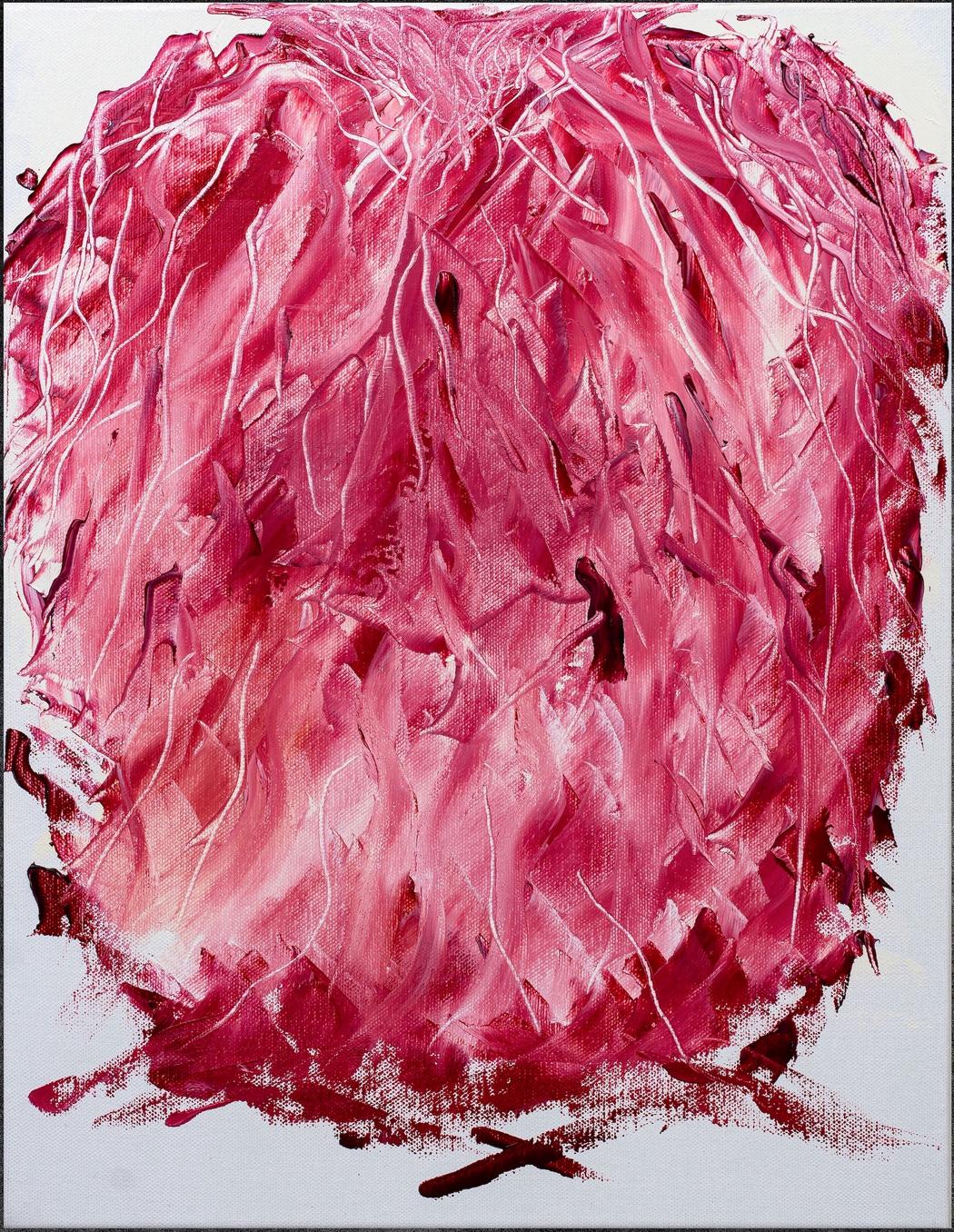
How does your work as a director and producer feed into your painting process, if at all?
I’m someone who sets very high standards for myself. I find directing and producing to be incredibly stressful jobs. During live performances, my team and I have only one chance to deliver a “perfect performance stage.” Perhaps it’s this pressure that makes painting a peaceful liberation for me. I can freely express any aesthetic within my own time.
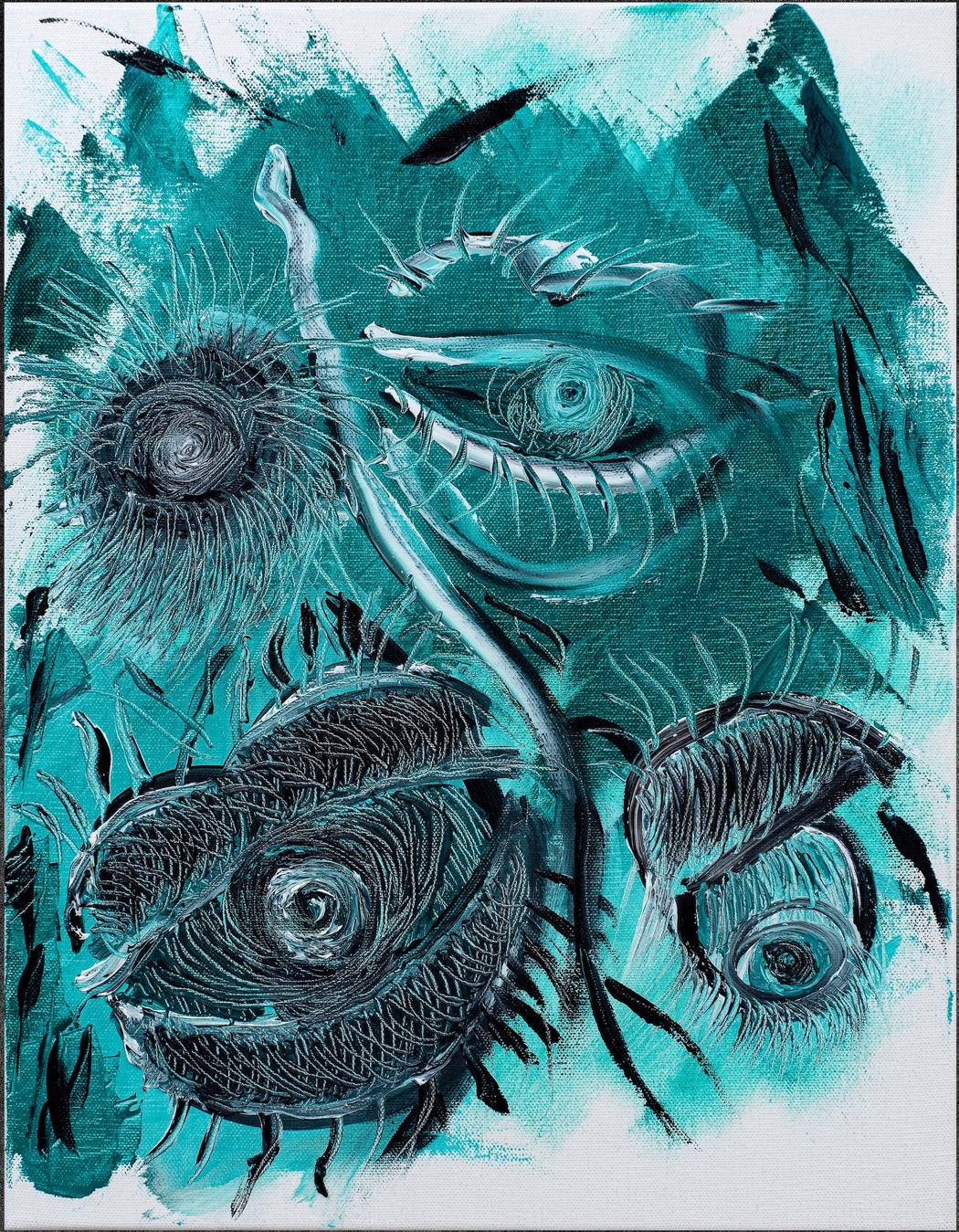
You describe painting as an “unrestricted self-dialogue.” Can you share a specific moment when painting revealed something surprising about yourself?
When I’m creating, my mind is often preoccupied with other thoughts, and I let my hands follow my consciousness. Even though I have a theme in mind, my inner consciousness still guides my hand to paint what it wants. My consciousness only wants to paint what it wants to express. So, when I look back at my painting months later, I often wonder if they were mine.
Why do you prefer using a palette knife instead of brushes, and how does this choice shape the energy and texture of your works?
I use a palette knife instead of a brush to create my lines because I have not received any formal training in painting. This is the case with most of my works, although some may use brushes in combination. If you get a chance to see them up close, you’ll understand.
The difficulty of palette knife painting lies in the fact that I have to blend all the colors I want within a few hours to create the desired layers and lines. The palette knife is difficult to control, so during the painting process, I focus solely on the “aesthetic balance” I perceive, not the final image. This often produces my paintings that most people see as different or unique.
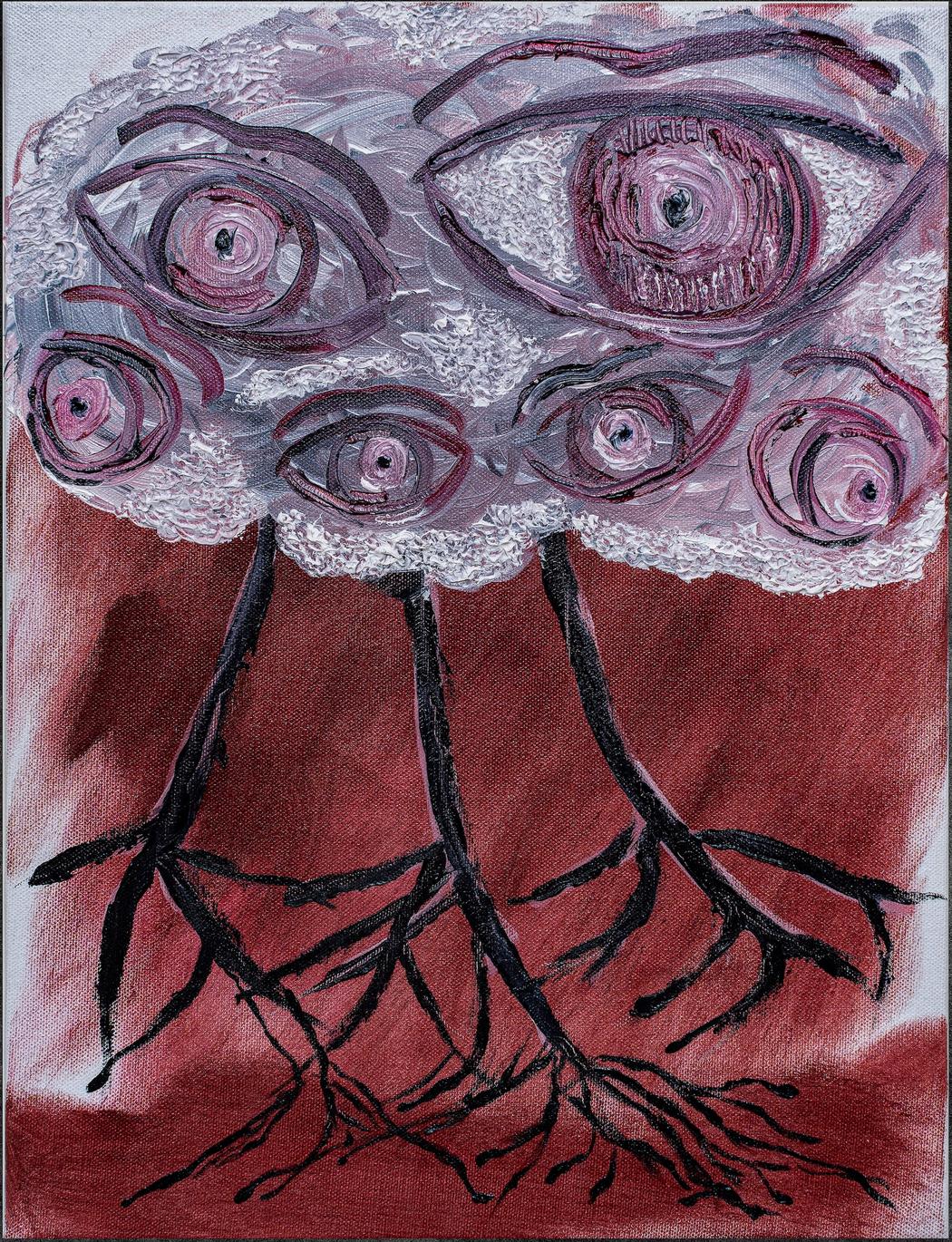
Your paintings often feature eyes, fragmented limbs, and distorted plants and animals. What do these recurring symbols mean to you?
For a while, I really resisted painting eyes, as it felt like I only knew how to draw eyes. However, a friend told me that eyes were the hallmark of my paintings, so I decided to start painting them freely.
I often say that I don’t paint what I actually see. So, regarding eyes—imagine my body sprouting thousands of long tentacles, they may represent my consciousness’s perception of the real world through my five senses. Perhaps through these eyes, I see something unknown, but I’m still trying to figure it out; it may remain a mystery forever, nobody knows.
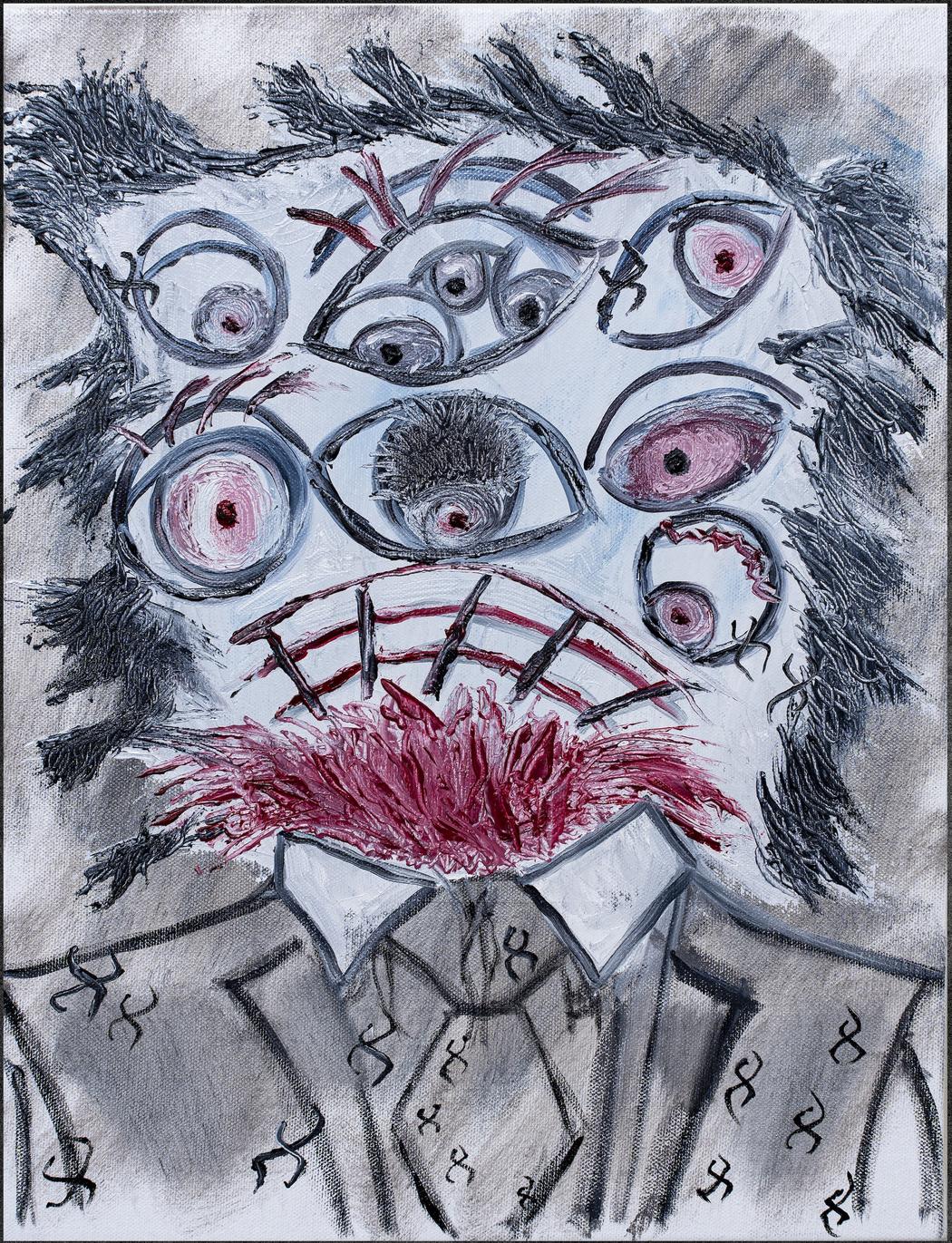
You mention that your images may stem from “inner darkness, insecurity, and longing for the unknown.” How do these emotions transform while you paint?
I don’t know how they transform, but I’m certainly aware of this: every time I finish a painting, I feel calmer and more understanding of things I didn’t understand before. When anger, anxiety, and the unknown all form like a dark twister, painting acts as a medium to transfer this energy, allowing the emotions to manifest into a solid image. This process can be a bit like a relief for me.

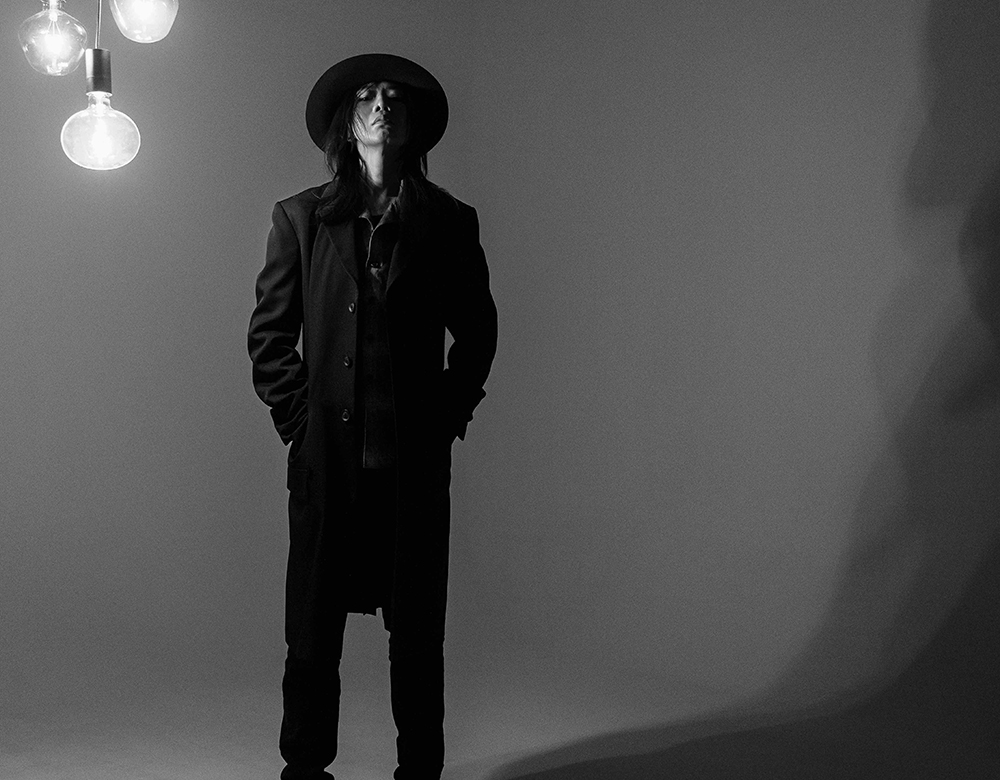
Leave a Reply